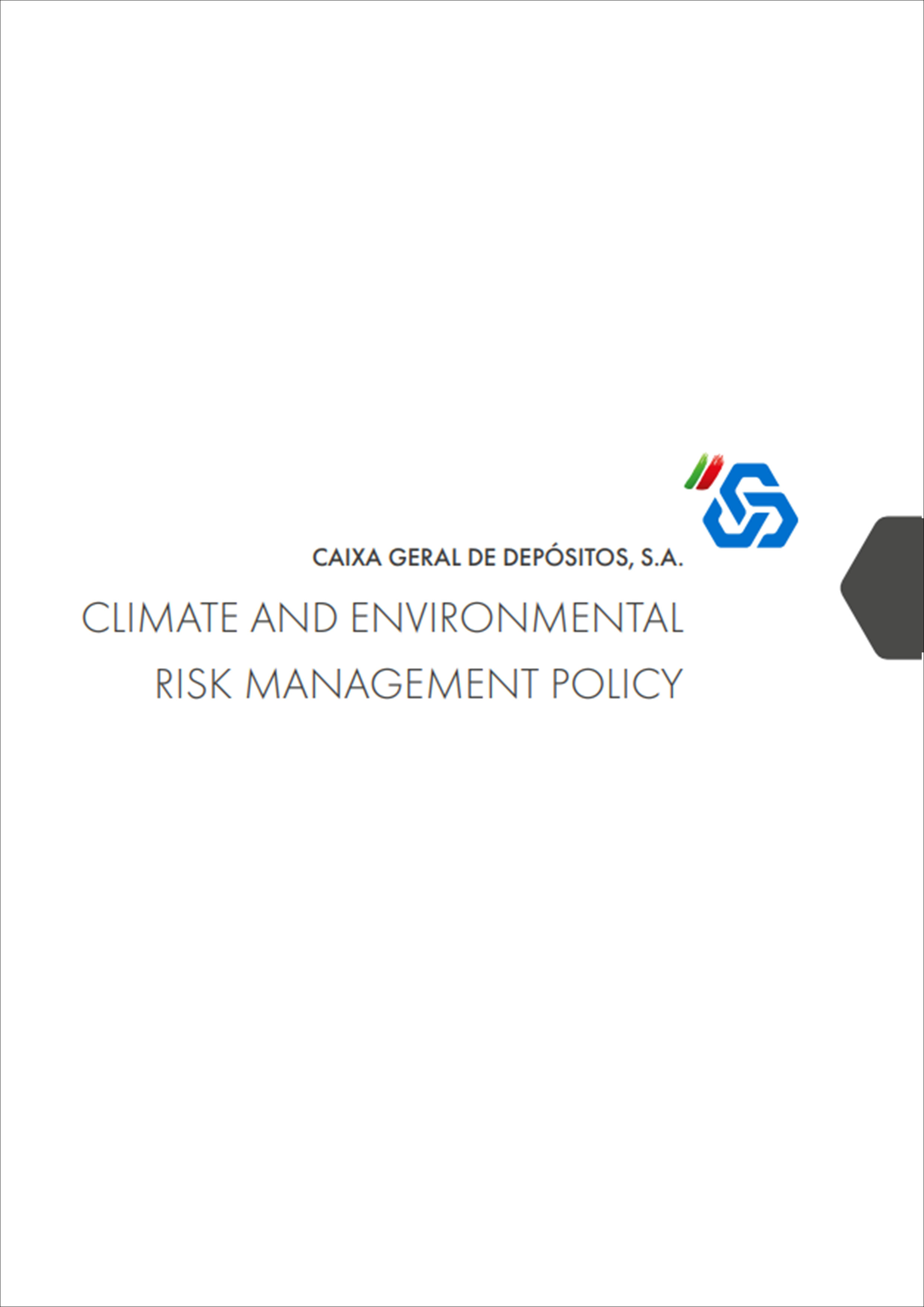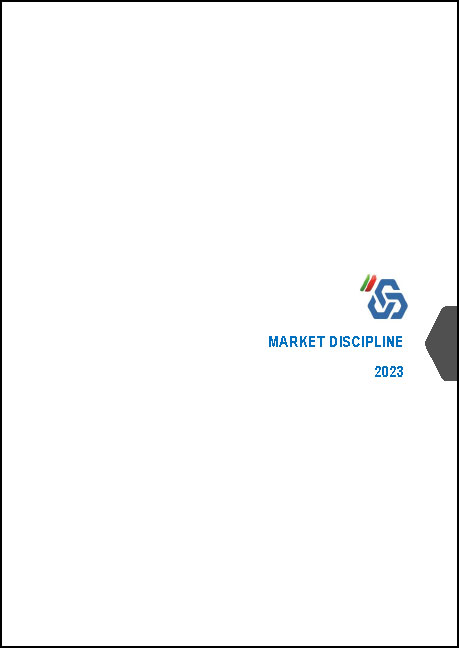- Social Responsibility
- Homepage
- Caixa Social Program
- Caixa Social Awards
- Sou Cidadao Program
- Corporate Volunteering
- Support Funds
- Donation Program
- Financial Literacy Education
- Caixa Mais Mundo Awards
- Other initiatives
- Culture
- Culturgest
- Environmental Responsibility
- Homepage
- Initiatives
- Environmental Management System
- LowCarbon Program
- Card Recycling
- Lisbon Green Capital
- Natural Capital Conservation

management

The management of ESG risks in application of CGD's Risk Taxonomy makes it possible to identify the main associated financial risks. With the growing climate crisis, the Bank identifies the main climate risks - Physical and Transition, in order to assess the associated financial implications, as well as identifying mitigation and adaptation measures, helping to promote investment in sustainable and resilient solutions, opportunities and business models.
CGD has been following the reporting recommendations of the TCFD (Task Force on Climate-related Financial Disclosures) and annually discloses its alignment and performance with the underlying principles in the Sustainability Report.
Regarding ESG risk management, our approach is based on four key pillars:
Governance
Caixa is constituted by several national and international companies operating in various sectors such as commercial banking, investment banking, venture capital, asset management, specialized credit and the real estate market. Its organizational and management model combines this mission with the objective of profitability, financial growth and strengthening, prudent risk management, good relations with stakeholders and a strategic commitment to sustainable development.
CGD updated the competences, operating standards, composition and respective support structure of the Sustainability Committee, seeking to specify the governance model associated with the management of climate and environmental risks (C&E), namely in the implementation of measures for the mitigation and adaptation of C&E, the promotion of strategies for integrating the results of climate stress test exercises and scenario analysis into the business strategy of the Group and the monitoring of action plans in response to the requirements of the regulator and supervisor.
Strategy
CGD's 2021-2024 Strategic Plan defines "Sustainability and Social Impact" as one of the vectors for pursuing of a profitable and sustainable business model. In this sense, the bank has established its 2021-2024 Sustainability Strategy and its respective strategic pillars:
- Sustainable and Inclusive Finance – Financiar a transição para uma economia de baixo carbono de uma forma justa e inclusiva.
- Climate Risk Management - Accelerating the transition to a more sustainable and resilient economy through efficient climate risk management.
- Equity, Digital and Financial Inclusion – To be an inclusive bank that prioritizes the well-being and development of employees and society.
- Transparent Governance Models – Adopting efficient governance models that drive performance in a responsible, diverse, and transparent manner.
- Disclosure of Sustainability Information – Make regular and transparent disclosures on ESG performance in accordance with best reporting practices and applicable regulations.
With regard to C&E risk management strategy, CGD has defined a set of carbon reduction targets for the most carbon-intensive sectors and where it has the greatest financial exposure, described in template 3 of the Market Discipline Report.
Risk Management
According to Caixa's Risk Taxonomy, non-financial risks include four key risks, namely: strategy and business, model, information technology and reputational.
Climate and environmental risks are considered a subcategory of strategy and business risk and also an additional risk factor for traditional risk categories, namely credit risk, market risk, operational risk, and reputational risk.
This subcategory includes analysis of the materialization of negative impacts on results or capital, resulting from climate change and environmental degradation that affect the economic system and activities, natural and human systems and regions. A specific management model for these risks is implemented, which provides for the identification, assessment, measurement, monitoring, control and reporting of non-financial risks throughout the Group.
This process is detailed in the Corporate Climate and Environmental Risk Management Policy, approved by the Board of Directors, and transposed by CGD Group entities in 2023. The Policy defines the principles and governance model for climate risks management, namely the responsibilities of the three lines of defense, the procedures for identifying and assessing climate risks, the integration of their factors into business processes, which are intrinsically related to business strategies and risk appetite and, and finally, the monitoring and communication procedures.
The importance of establishing a uniform reporting system for all entities was also recognized, including the Integrated Risk Report (RIR) and the Risk Appetite Dashboard (RAS). As part of the obligations stipulated by the European Banking Authority (EBA) in the Pillar 3 framework, CGD has been reporting in its Market Discipline Report a set of qualitative and quantitative information on its ESG risk management and to what extent climate change impacts its financing portfolio.
Indicators and targets
The accounting of GHG emissions and their periodic monitoring are fundamental practices for the construction of an effective strategy in the management and reduction of GHG emissions. An annual inventory of the GHG emissions of CGD (Portugal) and affiliated entities is carried out in accordance with the guidelines of the Greenhouse Gas Protocol (GHG Protocol).
The climate and environmental risk management strategy, namely its monitoring and control, was established based on Caixa's risk appetite, formalized through the Risk Appetite Statement, which contains continuously monitored climate and environmental risk metrics.
- The metric "Revenues generated from interest, fees and commissions from companies in Greenhouse Gas (GHG) intensive sectors" is monitored quarterly by the Risk Department for several entities of the CGD Group. In 2023, the following were monitored: Caixa SA, the France Branch and the Commercial and Investment Bank (BCI) of Mozambique.
- The metric "Financed GHG emissions" is monitored quarterly by the Risk Department. The metric encompasses corporate exposures to non-financial companies, other than Small and Medium-sized Enterprises (SMEs), in 22 selected sectors, providing an approximation of the bank's exposure to the most GHG-intensive companies and performance in terms of portfolio alignment with Caixa`s carbon neutrality commitments and the bank's strategic objectives.
For more information, see chapter “4.9. Climate risk management” of the Annual Report.




